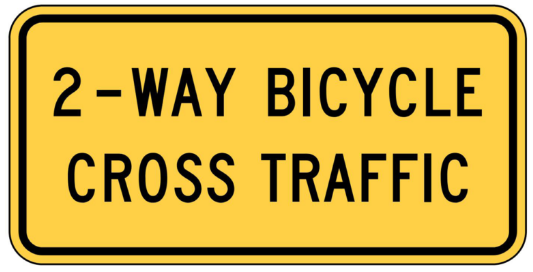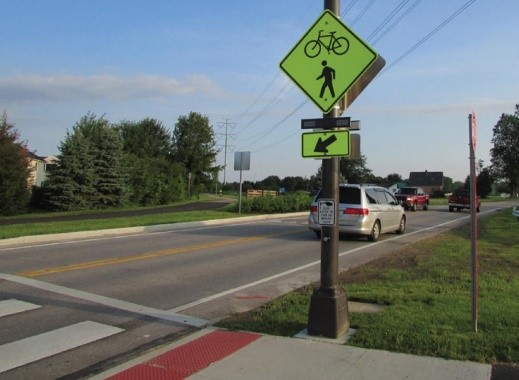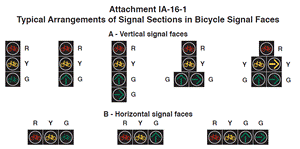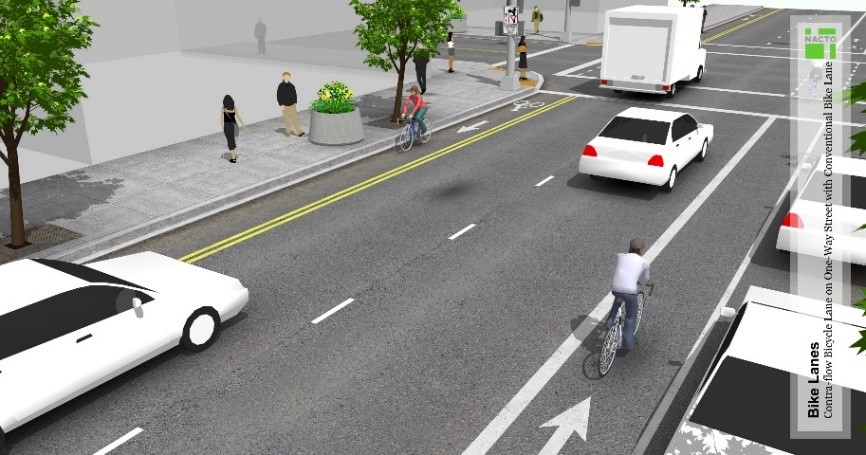The 11th edition of the Manual on Uniform Traffic Control Devices for Streets and Highways (MUTCD) was released on December 19, 2023. What is the MUTCD? It’s the document issued by the Federal Highway Administration (FHWA) that specifies national standards governing all traffic control devices, bringing uniformity to public streets, bikeways, highways, and private roads open to public travel. The 11th MUTCD edition addresses the evolving challenges of modern traffic and integrates valuable feedback from experts and stakeholders. Some highlights from the new edition include more advanced guidelines for pedestrian and bicyclist safety infrastructure, improved navigational signage, and enhanced and improved standards for traffic control devices.
One of the critical aspects of the announcement of the 11th edition of the MUTCD is the requirement for state Departments of Transportation to either adopt it or establish a State MUTCD in substantial conformance with it within two years of the effective date. This not only ensures a standardized approach to traffic control across the nation but also underscores the urgency in implementing the latest and best practice in safety measures on our roads.
More importantly, the Infrastructure Investment and Jobs Act of 2021 (IIJA), also known as the Bipartisan Infrastructure Law (BIL), mandates that the MUTCD be updated every four years. The FHWA has confirmed that they intend to adhere to this timeline. Historically, updates occurred approximately every four to eight years. The shorter timeline means that revisions to the manual are more likely to keep pace with innovation and current practices.
Interim No More
Since the previous MUTCD edition had not been updated since 2009, many of the traffic control markings and devices listed below had received “interim approval,” which required local jurisdictions either to submit a written request to the FHWA for permission to install these features or report installations to the state DOT as part of a “blanket interim approval.” In recent years, installations permitted under interim approvals included two-stage bicycle turn boxes, intersection bicycle boxes, green-colored pavement for bike lanes, red-colored pavement for transit lanes, and rectangular rapid flashing beacons (RRFBs). The 11th edition formalizes these features, so they no longer require interim approvals and reporting.
Bicycle and Pedestrian Highlights in the 11th Edition of the MUTCD
Contextual Speed Limits
The 11th edition MUTCD provides contextual guidance on speed limit setting, with a deliberate de-emphasis of the 85th percentile in non-freeway or rural highway settings. The 85th percentile is a metric that has been used since the 1960s to set speed limits on roads based on the observed speed of drivers on that road. A growing body of research shows that using this process has led to faster speeds and increased risk of fatal crashes on many roads. The revised approach recognizes the importance of tailoring speed limits to specific road and land use conditions, ensuring a safer environment for all types of roadway users of all ages and abilities.
Enhanced Facilities for Bicyclists
A focus in this edition is on improving facilities for bicyclists. This includes guidelines for separated bike lanes and protected intersections.
Standardized Signage for Two-Way Separated Bike Lanes
Recognizing the growing popularity of two-way separated bike lanes, the 11th edition standardizes signage, streamlining navigation and improving predictability for both cyclists and motorists.

W16-21P sign for use when crossing a two-way separated bike lane

Photo: FHWA Proven Safety Countermeasures
Distinctive Pavement Markings
Green and red colored pavement markings for bikes and buses enhance visibility and assert the dedication of certain portions of the road to specific travel modes. These distinctive markings contribute to a safer and more organized traffic flow, especially in areas with mixed vehicle and bicycle traffic.
Rectangular Rapid Flashing Beacons (RRFB)
RRFBs provide flashing lights to alert drivers to the presence of pedestrians at crosswalks. RRFBs are an FHWA proven safety countermeasure that can reduce the risk of crashes by up to 47 percent. [view RRFB page].
Bicycle Signal Faces
Bicycle signal faces are a dedicated traffic light for bicyclists. This addition aims to reduce conflicts between bicyclists and motor vehicles. (See page 676 in the MUTCD.)
Innovative Intersection Solutions
The introduction of two-stage bicycle turn boxes and separated crossings for mode-separated lanes and paths add flexibility and safety to intersections, catering to the diverse needs of bicyclists. Examples can be found on the NACTO site.

Photo: MUTCD 11th Edition (pg. 676)

Photo: Toole Design
Contraflow Bike Lanes
The 11th edition allows for contraflow bike lanes on one-way streets. Contraflow bike lanes are known to decrease sidewalk riding and reduce wrong-way riding. While these facilities provide new opportunities to enhance bicycle connectivity, the MUTCD notes the importance of carefully assessing the local context before installation.
Where to Find More Information
The release of the 11th edition of the MUTCD marks an important moment in roadway safety.
For a detailed discussion of the final dispositions of major changes from the 2009 edition, the Federal Register notice can be accessed at https://www.federalregister.gov/d/2023-27178. To explore the 11th edition of the MUTCD and related information, visit the MUTCD web page at mutcd.fhwa.dot.gov.
